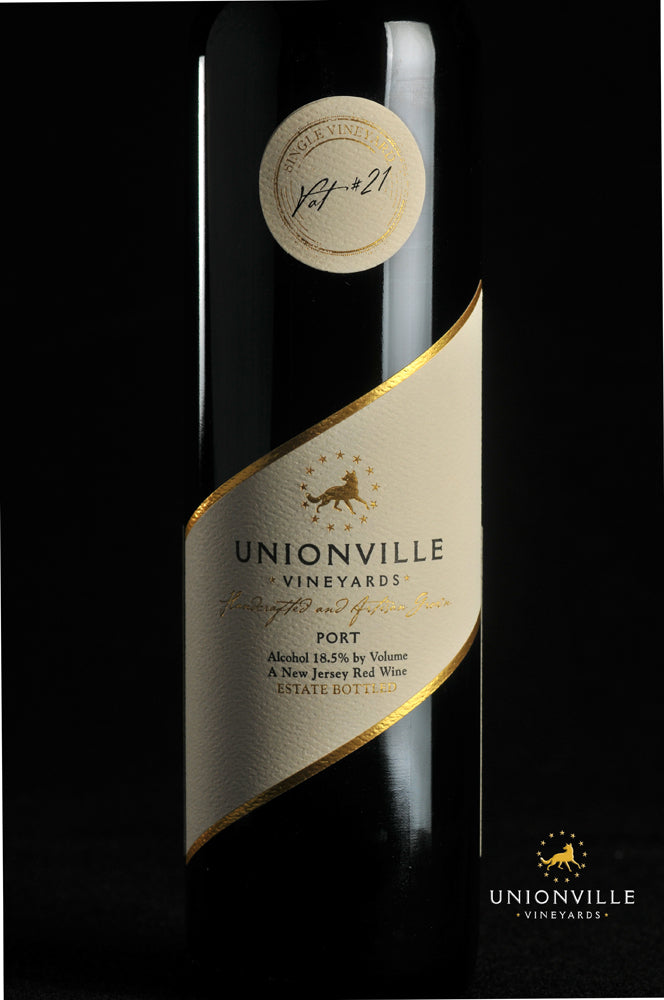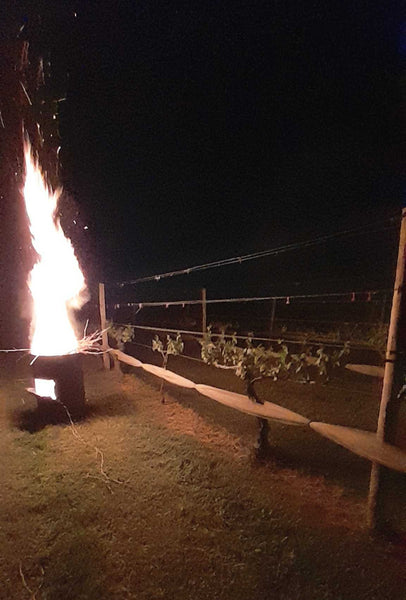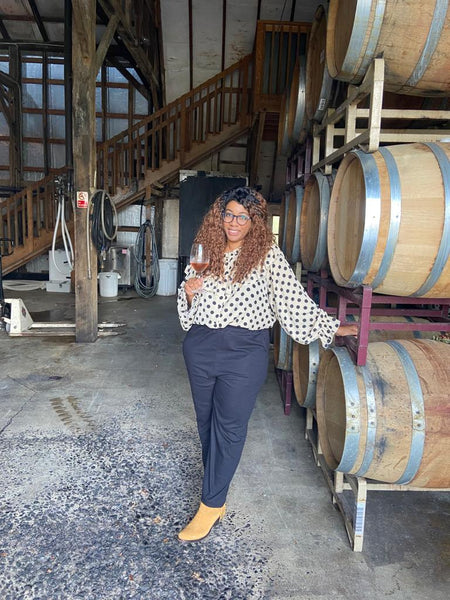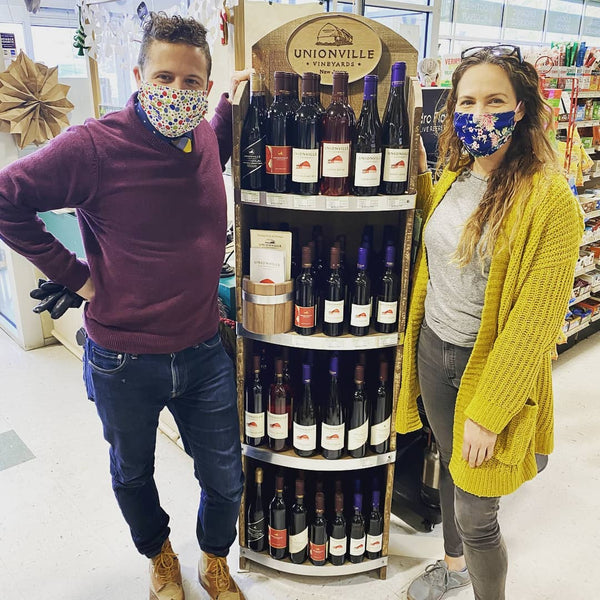Winter is coming and so is Port wine

It’s the most wonderful time of the year! I know that is cliché to say, but it truly is a great time at Unionville. We’ve got all of our reds pressed and in barrel. Cooler, stainless-steel fermentations are finishing up in tank, I’m finally able to breathe a little easier, and wake up a little later. With the holidays upon us, the wine making team has a lot on the mind, but one thing standing out is the blending, bottling, and release of Vat #23 – the latest rendition of our opulent Port wine.
Port has a storied history at Unionville – the fortified delight has been made at the winery since its first vintage in 1993, Before we delve into that, we have to talk a little about how Port is made and the different styles in which it can be presented.
Port, named for its origin country, Portugal, is typically a sweet or medium-dry red wine, fortified with distilled grape spirit, then cellared and bottled at different times and in different ways to present specific stylizations. The two most recognizable presentations of Port wine are Ruby and Tawny Ports. Ruby styles are young wines usually aged for only a couple of years (or less). They’re released early to showcase juicy acidity and fruity characteristics of young wine with fuller mouth feel and complexity coming from fortification. Tawny Ports are usually much older – benefitting from years of slow oxygen absorption and evaporation provided by the wooden barrels used for storing the wine. This oxidation promotes the development of the complexities and savory flavors of Port that we all know and love.
At Unionville, we started by making only vintage ports. Occasionally we still do, when special vintages are showcasing a specific style well. For the past 15 years however, Unionville has adopted a Solera-style blending technique (typically used for Sherries) to create our ”Vat Series”. This means we blend our Port across vintages to integrate aspects of multiple  harvests, styles, flavors, and structures. For example, Vat #23 is a carefully crafted blend of Port from nine vintages stretching from 2016 all the way back to 2001. Bright raspberry entry rapidly evolves into sinful notes of warm blueberry compote and creamy milk chocolate. As the senses adjust, the layered nature of this complex blend begins to take form, with flavors of crème brulee, dark chocolate, coffee liqueur, and amaretto flooding the mid-palate. Smooth, velvety mouthfeel with supple tannic structure accentuates these layers as the finish unfolds into deep notes of toffee and hazelnut that last long after you swallow. It’s a perfect journey through 15 years of Port production at Unionville Vineyards.
harvests, styles, flavors, and structures. For example, Vat #23 is a carefully crafted blend of Port from nine vintages stretching from 2016 all the way back to 2001. Bright raspberry entry rapidly evolves into sinful notes of warm blueberry compote and creamy milk chocolate. As the senses adjust, the layered nature of this complex blend begins to take form, with flavors of crème brulee, dark chocolate, coffee liqueur, and amaretto flooding the mid-palate. Smooth, velvety mouthfeel with supple tannic structure accentuates these layers as the finish unfolds into deep notes of toffee and hazelnut that last long after you swallow. It’s a perfect journey through 15 years of Port production at Unionville Vineyards.
However, while Vat #23 may be smooth, establishing a portfolio of 15 years of Port vintages while trying to maintain balance and economic volumes throughout every blend is anything but! The problem is, we want to make as much Port as we can every year for everyone to enjoy, but every time we blend we also must be thinking logistically about Vats as far as five years in the future. It takes years for Port wine to develop the complexity and intensity of those flavors exhibited on the midpalate and finish of our Port, so every time we take 20 gallons out of a barrel, its 20 gallons of that specific profile away from next years’ Vat, and that of future editions as well. On top of this, vintages that we use for accentuating ruby flavors in Port, in time, will become the vintages we use for the memorable tawny finish.
Chambourcin (the bright and juicy French-American  hybrid grape we use to make our Port) is one of the only hybrids we grow and use consistently at Unionville, with most of our production focused on Vitis vinifera vines such as Chardonnay, Syrah, and Pinot Noir. Vinifera takes a lot more skill and effort to grow and maintain, so for a number of years, putting time, effort, and materials into controlling crop load and protecting Chambourcin from hungry predators like birds and deer took the backseat to doing the same for the rest of our crop. Unfortunately, this began to put huge amounts of pressure on our yearly Port production with sometimes as much as 75% of our Chambourcin crop being destroyed by harvest time.
hybrid grape we use to make our Port) is one of the only hybrids we grow and use consistently at Unionville, with most of our production focused on Vitis vinifera vines such as Chardonnay, Syrah, and Pinot Noir. Vinifera takes a lot more skill and effort to grow and maintain, so for a number of years, putting time, effort, and materials into controlling crop load and protecting Chambourcin from hungry predators like birds and deer took the backseat to doing the same for the rest of our crop. Unfortunately, this began to put huge amounts of pressure on our yearly Port production with sometimes as much as 75% of our Chambourcin crop being destroyed by harvest time.
Volume pressure throws yet another logistical variable into our blending practices making it difficult to either make a balanced Port or make enough of one, so in the past couple years, we have been focusing on adjusting our management practices as well as investing capital in assuring we get the most out of the 3.5 acres of Chambourcin we have planted. From 2015 to 2017 we have more than doubled our Port production, and will continue to invest in restoring these vineyards to their full potential in an effort to keep growing production and keep making unique, balanced, nuanced Port wine.
As Port is restored to its foundational position in our portfolio, we look towards the future knowing that when we only have ten gallons of the well-structured 2010 vintage, the 2013 vintage is our most balanced tawny to date, or the 2016 vintage’s youthful blueberry note has developed into a deep mocha flavor impossible to ignore, we will still be using all three and everything after and in between to master our November blend for your enjoyment.
Vat #23 as of mid-February is just about sold out. Click here to grab one of the last remaining bottles.
-Conor Quilty, Associate Winemaker
Leave a comment
Comments will be approved before showing up.
Also in Unionville Grapevine

Too Frigid For May: How Unionville Reacted to Destructive Frost

Meet Ahjiné Garmony, Unionville's New Wine Club Manager
Desk or vineyard? This is the question I asked myself when making the leap of faith to leave my corporate life behind to pursue my passion for wine. After working in the medical communications space for 10 years, 2022 was the year of epiphany. It may sound old fashion, but I did have a major realization in the beginning of the new year that I was not meant to work behind a desk and chug along doing work that I was no longer passionate about.
My first notion of my interest of wine came during my frequent business trips to Boston about 4 years ago. For the first time I was immersing myself in the world of wine through client dinners, networking events and a lot of self-exploring through Beantown. During this time was my first encounter with sommeliers and wine experts. I was fascinated and intrigued by the expertise knowledge of wine, wine making and learning about the intricacies that goes into producing a bottle of wine. At this moment, I thought about how amazing it was to witness such passion for the craft of wine.
I enrolled in an online sommelier level one course at the Wine School of Philadelphia and began studying and reading everything I could about wine. This is where my 2nd major epiphany happened – I asked myself, the question that I stated in the beginning “desk or vineyard?”
This is the question that started the major stepping stone to my journey. I no longer wanted my wine passion to be in the background – I wanted to be 100% committed and both feet in. Unionville Vineyards was the first winery that popped into my head when I thought about making my “9:00- 5:00” switch. I attended a wedding at Unionville the year prior and loved the atmosphere, the wine and the people. The position that I applied to was half farm work half hospitality. I was instantly attracted to the idea of being out in the field to where it all begins in wine making. Thoughts of my “office” transforming into the beautiful vineyard was something I desired. I was pleasantly surprised to learn that Unionville has multiple vineyard sites with the Coventry site located within Coventry Farm in Princeton being my favorite (love the views there!) Working at the different sites allows you to see how the different micro climates, soil and land impact the vines and fruit cluster growth. Also working in the field to me was the perfect learning opportunity to understand the craft of wine making soup to nuts. Being surrounded by vines that produced grapes such as Pinot Noir, Cabernet Sauvignon, Syrah, Chardonnay was eye opening to me. I was so used to seeing the finished product of these grape varietals in their bottled form, but actually being able to perform farming techniques on the vines starts to create another level of perspective and appreciation for wine.
One of my favorite farming tasks to perform in the field on the vines is leaf pulling. Leaf pulling is when you remove leaves from around the fruit clusters. The rule of thumb is to remove leaves that are across and below from the fruit cluster. Removing the leaves creates oxygen flow, openness for pesticides to be sprayed and exposes the fruit to more sunlight. I enjoy seeing the satisfying result of a perfectly balanced vine with the right number of leaves removed. Working in the field creates a huge bond between you and your other field peers. You become a family unit and learn how to work together and communicate as a team. To me, this is a very important factor for having a successful vineyard. My experience with people at Unionville in general has been amazing. You have the opportunity to interact with people from all different backgrounds (teachers, college, corporate, etc.) which makes for some great conversations and comradery.
To anyone reading this, do not be afraid to follow your passion and take a chance on doing what you want to ensure your happiness. It was scary to make such a drastic shift from corporate to farm work, especially since the two are extremely opposite ends of the spectrum, but I have no regrets and I am happy with where my career and focus is going.

